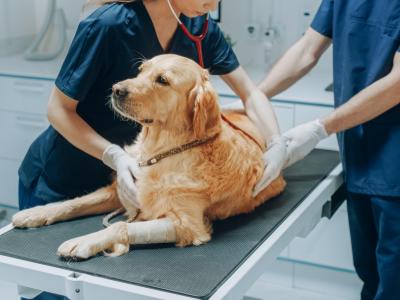Texas reports rise in Cyclospora cases
The Texas Department of State Health Services said today that clinicians should consider testing patients who complain of lingering diarrhea for Cyclospora, a parasite that can cause severe diarrheal illness.
According to state officials, there have been 68 reported cases of Cyclospora in the last month. Texas health officials are currently conducting investigations to determine if the reported cases share a common exposure source.
In past US outbreaks, the parasite has been linked to salad mix, raspberries, snow peas, and lettuce. Washing fresh produce does not totally eliminate the risk of Cyclospora, which is transmitted through food and water contaminated with Cyclospora cayetanensis. Infection is not generally transmitted person-to-person.
Symptoms of Cyclospora infection begin 2 days to 2 weeks after ingestion, and severe diarrhea can last for months.
Canada has reported a Cyclospora outbreak that has so far sickened 57 people in British Columbia and Ontario, with most of the illnesses reported from Ontario. The patients were sick between May and June, and an investigation into the source is underway, the Public Health Agency of Canada (PHAC) said in Jul 14 update.
Jul 17 Texas Department of Health alert
Jul 14 PHAC update
Report details non-prescription use of antibiotics in Europe
A report today from the European Commission estimates that 7% of antibiotics taken in the European Union (EU) are taken without a prescription.
The report, which describes the results of the ARNA (antimicrobial resistance and the causes of non-prudent use of antibiotics) project, found that the highest self-reported use of non-prescription oral antibiotics was in Romania (20% of all antibiotic users in 2013, and 16% in 2016) and Greece (16% of all antibiotic users in 2013, and 20% in 2016). High rates of non-prescription antibiotics use were also found in Latvia, Bulgaria, Croatia, and Hungary. The antibiotics were obtained from either a pharmacy or healthcare provider without a prescription, or were left over from a previous prescription.
Patient surveys in seven of the ARNA countries suggested lack of knowledge about antibiotics was a major determinant of non-prudent use, while surveys of pharmacists found that patient pressure played a role in the decision to sell antibiotics over-the-counter (OTC) without a prescription, with some pharmacists saying they feared customers might go to another pharmacy if they refused. A majority of pharmacists and general practitioners (GPs) reported being asked to prescribe an antibiotic even though there was no medical indication.
Dialogue meetings in six of the ARNA countries—Cyprus, Greece, Italy, Hungary, Romania, and Spain—resulted in several policy recommendations to reduce non-prudent use of antibiotics. The recommendations included public health campaigns to educate patients and healthcare providers on appropriate antibiotic use, efforts to strengthen collaboration between GPs and pharmacists, increased use of rapid diagnostic tests that can be performed at the point-of-care, and better enforcement of laws to prevent OTC sales.
July 17 ARNA report
MERS super spreader analysis points to infection control role
A detailed analysis of clinical data and MERS-CoV genetic sequences of the index patient in South Korea's 2015 outbreaks related to hospital settings suggests that the 68-year-old man was a super spreader because of problems with infection control rather than any changes in the virus. South Korean researchers published their findings in a Jul 14 early online edition of BMC Infectious Diseases.
Though MERS-CoV (Middle East respiratory syndrome coronavirus) has been detected in several countries outside of Saudi Arabia, the outbreak in South Korea was unprecedented due to its size (186 cases, 36 of them fatal, over a 2-month span). The event raised suspicions about whether the South Korea strain was more virulent or if there were unique features in South Korea's hospital systems that favored the spread.
Before he got sick, the man had traveled to the Middle East for business, spending most of his time in Bahrain but also making side trips to the United Arab Emirates and Saudi Arabia. Though he didn't encounter any known risk factors in Saudi Arabia, a comparison of his sample with other MERS-CoV viruses revealed that the closest relative was a 2015 Riyadh virus.
Researchers said the man was one of five super spreaders in the outbreak and that he visited four hospitals where 28 related secondary infections were reported. Prolonged duration of exposure before diagnosis and proper isolation may have contributed to the illnesses linked to the man, the group wrote. However, they also said greater pathogen shedding could have played a role, because the man had severe pneumonia and a severe cough during his illness which could have amplified transmission.
Jul 14 BMC Infect Dis abstract
In other MERS-CoV research developments, another South Korean research team reported on serologic responses they saw in 42 patients infected in the country's outbreak. They reported their findings in the Jul 14 edition of Diagnostic Microbiology and Infectious Disease.
The patients included in the study had been treated during an outbreak at Samsung Medical Center. The researchers grouped them into four severity groups.
None of the patients in the asymptomatic group seroconverted, and seroconversion increased along with disease severity. Among patients with pneumonia, 75% of those who died did not seroconvert by the third week, whereas 100% of survivors had done so. The team concluded that case-patients with mild disease showed low seroconversion rates whereas those with fatal infections had impaired responses.
Jul 14 Diagn Microbiol Infect Dis abstract
Emergent BioSolutions to acquire Sanofi's smallpox vaccine
Emergent BioSolutions, a biotechnology company based in Gaithersburg, Md., announced on Jul 14 that it has entered an agreement to buy Sanofi's smallpox vaccine, ACAM2000. In a press release, Emergent said the transaction is worth up to $125 million.
ACAM2000 is the only vaccine licensed by the Food and Drug Administration (FDA) for active immunization of people at high risk for infection. As part of the acquisition, Emergent will take over an existing 10-year contract with the Centers for Disease Control and Prevention for deliveries of ACAM2000 to the strategic national stockpile (SNS). Originally worth $425 million, the contract still has a value of about $160 million for the vaccine to be delivered to the SNS.
The deal includes a bulk manufacturing facility and a lease of a fill-finish facility, both based in the United States.
Daniel Abdun-Nabi, Emergent's president and chief executive officer, said in the press release that the transaction supports the company's growth goals and broadens its countermeasure holdings with a vaccine that is being stockpiled in the United States and internationally. The deal is expected to be finalized this year.
Sanofi is completing the technology transfer from a facility in Austria to the United States, and Emergent expects that an application for FDA licensure will be filed in the second half of 2017 and that product deliveries will resume in 2018 after the FDA licenses the manufacturing facility.
Jul 14 Emergent BioSolutions press release














